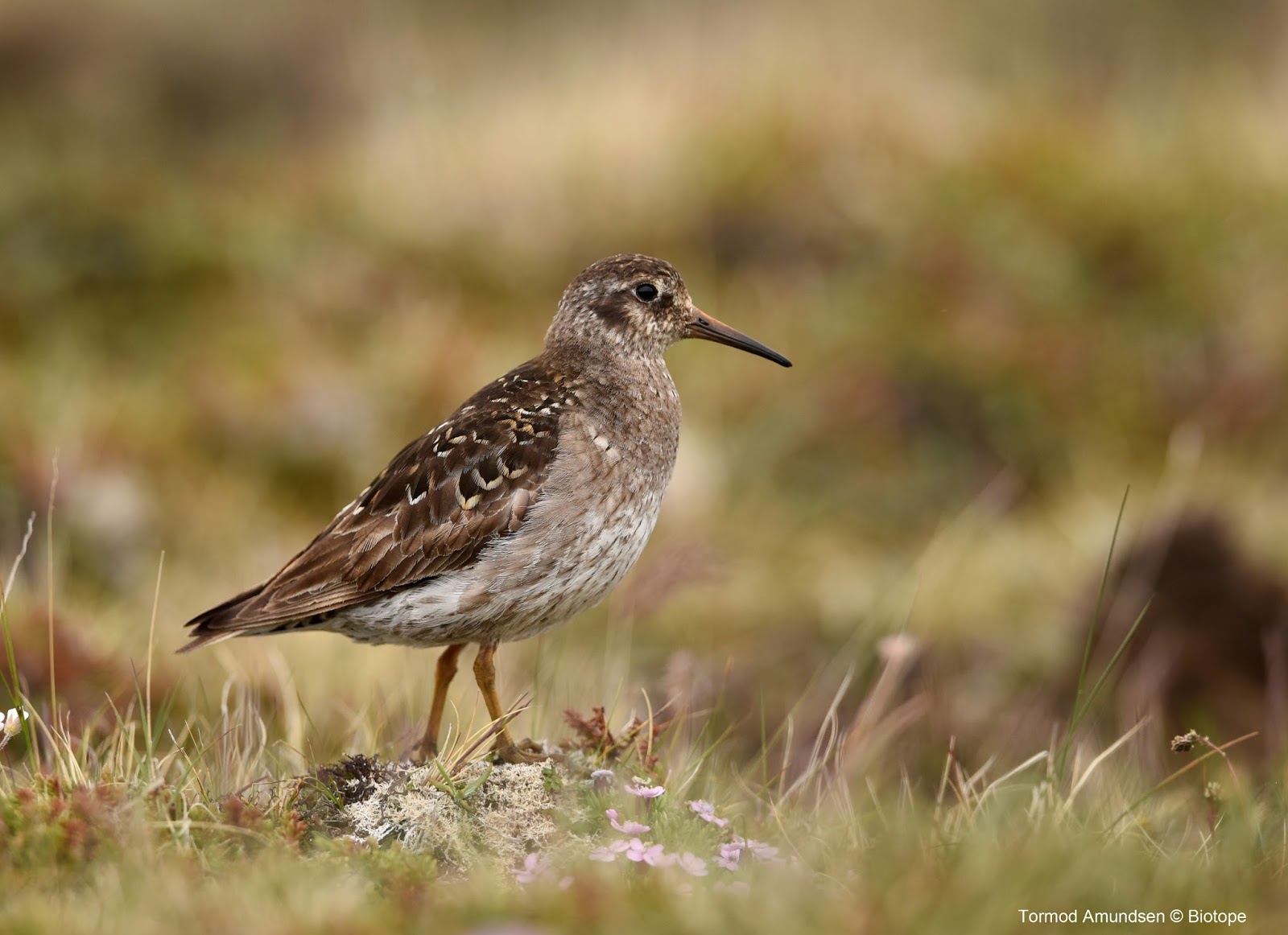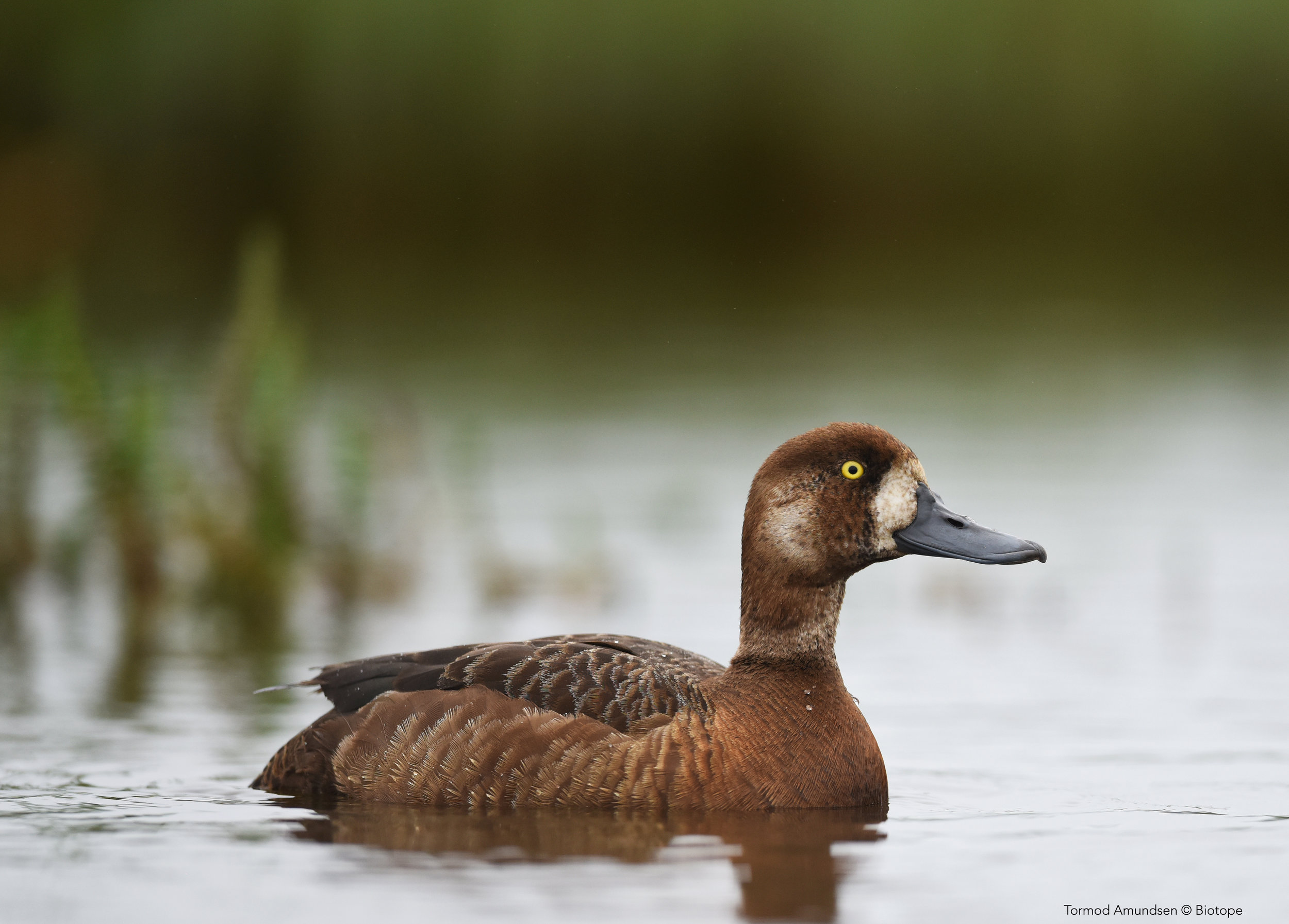Once you cross the old bridge over the glacial river Jökulsá, you are in the Öxarfjörður district. The first good stop is at the tree-plantation at Akurgerði (18), clearly marked by flags and a parking lot on the right side of the road. A walk along the trails through the wood is likely to yield Winter Wren, Common Redpoll and Redwing. This area is also particularly good for Short-eared Owl and Eurasian Woodcock in the evenings. If breeding Great Skua is on your wish list, make a left turn at road 866 to Austursandur and cross the bridge over the river Sandá. Just west of the bridge is a track which continues west that you can follow on foot or in a good car until you encounter the Great Skuas. Return to road 85. On the road out to Melrakkaslétta, stop briefly to check the gulls at the fish farm called Silfurstjarnan. Scarcer gulls are often found there, such as unseasonal Iceland Gulls or even Little Gulls. Another good stop on the way is at Buðlungahöfn (19), right where the sandy beaches of Öxarfjörður meet the rocky shoreline of Melrakkaslétta. King Eider is surprisingly regular at this site. Also look at the flocks of Common Eider north of this site for possible King Eider and scoters. Look for Northern Wheatear in rocky areas along the road towards Kópasker.
The next suggested stop is at Brekkutjörn, a pond south of Kópasker (20), and then three other similar ponds while approaching Kópasker. Red-throated Divers seem to be on every pond in this area, but the ponds are also teeming with a good variety of wetland birds. Once at Kópasker, heading to the unique area of Melrakkaslétta, you should be alert to interesting birds wherever there is good habitat. Keep your eye out on high points in the landscape for Gyr Falcon, which is normally found on a good day’s birding at Melrakkaslétta. Purple Sandpiper and Snow Bunting are very common at Melrakkaslétta and are virtually unmissable. Look for ducks at Leirhafnarvatn, and pay particular attention to the small flocks of Tufted Ducks as a drake Ring-necked Duck has been seen in this area for years during spring and summer. Take a left turn towards the shoreline near Nýhöfn (21) which often has scarce shorebirds among the more common ones such as Ringed Plover, Dunlin, Ruddy Turnstone and Red Knot. It is usually rewarding to make a left turn from road 85 towards the farm Grjótnes (22). There are interesting spots along this road on both sides of the road until the old farm is reached. Please turn before entering the gate to the farm as there is a protected Common Eider colony at the farm itself.
Back on the main road take a left turn towards the farm of Núpskatla. Near the farm is a large colony of Arctic Terns. A somewhat challenging hike (30 min) from the parking lot at Núpskatla to the bird cliffs of Rauðinúpur (23) will enable you to see Brünnich’s Guillemot among the more numerous Common Guillemot and Razorbill. Note that the auks generally leave the breeding grounds in early August. Northern Gannets nest on two rocks close to the cliffs and Gyr Falcons very often hunt the birds at the cliffs. Be sure to check the shoreline in the bay east of the farm as it often hosts interesting birds. Following road 85 towards Raufarhöfn, there are good birding spots near the farms at Sigurðarstaðir and Blikalón and wherever the road approaches the shore. Look for Common Shelduck in this area and continue the search for Gyr Falcon. A female Steller’s Eider has been regular for many years right were the long sandy beach of Sigurðarstaðavík meets a rocky shoreline just west of the farm Blikalón.
At the northeast corner of Melrakkaslétta there is an inlet called Harðbaksvík (24) which is worth checking thoroughly for migrating birds, as is the next bay south at the farm Ásmundarstaðir. North of the farm Höskuldarnes (25) is a bay which contains a scarce habitat at Melrakkaslétta, namely mudflats. At low tide these mudflats can be packed with waders. Look also for the long-staying, but rarely seen, drake American Black Duck among the Mallards. Great Cormorants are commonly seen at Höskuldarnes. It is often a good idea to look for birds within the small town of Raufarhöfn (26), including the sheltered shoreline, the small lake in the center of the village or simply the gardens around the houses.












